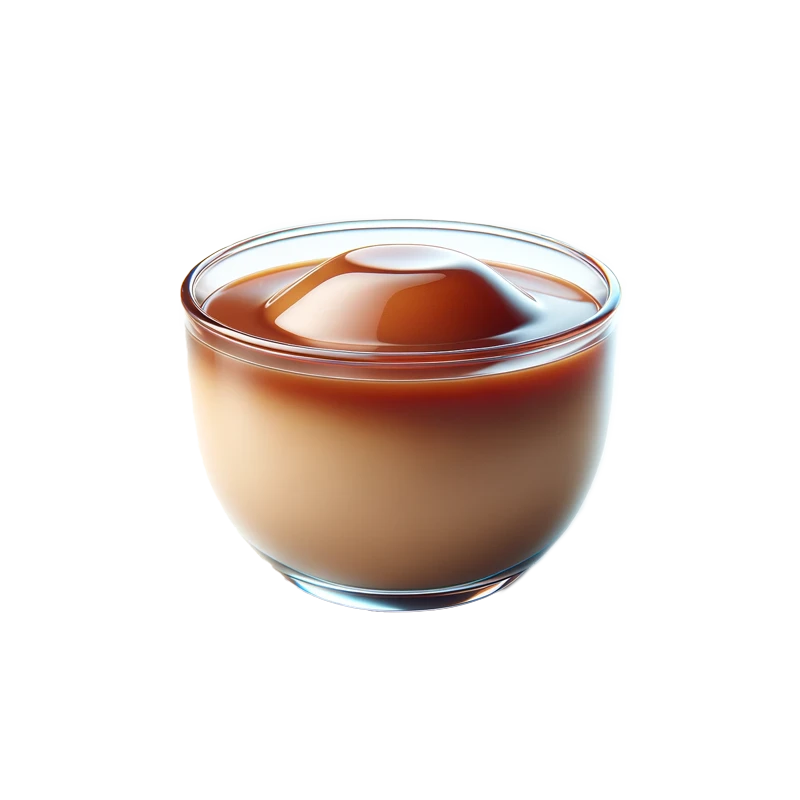Pudding — Nutrients, Health Benefits, And Shopping Tips

Written by Listonic Team
Last update on September 6, 2024
Pudding nutrients
Nutrition facts
Amount per 100 g
Calories
🔥 130 kcal
| Nutrition per: 100 g | Value | % Daily Value* |
|---|---|---|
| Carbs | 22 g | 8% |
| Fiber | 1 g | 3.57% |
| Sugars | 19 g | 38% |
| Glycemic Index | 40 | - |
| Protein | 3 g | 6% |
| Sodium | 135 mg | 5.87% |
| Total Fat | 4 g | 5.13% |
*The % of Daily Value (DV) tells you how much a nutrient in a serving of food contributes to a daily diet. 2,000 calories a day is used for general nutrition advice.
40
🟢 Low Glycemic Index
Pudding facts & tips
Health benefits
- Provides quick energy from carbohydrates, making it a source of immediate fuel.
- Can contain calcium if made with milk, supporting strong bones and teeth.
- Enhances mood and satisfaction as an occasional treat, contributing to emotional well-being.
Health risks
- High sugar content in many commercial puddings, which can contribute to weight gain, tooth decay, and increased risk of diabetes when consumed frequently.
- High fat content particularly in puddings made with cream or whole milk, which can raise cholesterol levels and increase the risk of heart disease.
- High calorie content which can contribute to weight gain if consumed frequently or in large portions.
- Potential for artificial additives such as preservatives, flavorings, or colorings in some commercial puddings, which may cause adverse reactions in sensitive individuals.
How to choose pudding
Pudding should have a creamy texture and be smooth, without any lumps or separation. The consistency should be thick enough to hold its shape when spooned.
Avoid pudding that has a watery layer on top or is grainy, as these are signs it has not been properly prepared. Pudding that tastes artificial or has an off smell should also be avoided, as it indicates poor quality.

How to store pudding
Pudding should be stored in the refrigerator, covered tightly with plastic wrap or in an airtight container. Refrigeration helps maintain its creamy texture and flavor for up to three days. Ensure it is kept in the coldest part of the fridge.
Exposure to air can cause pudding to develop a skin and lose its smooth texture. Avoid leaving it uncovered or using dirty utensils, as this can introduce bacteria. Always ensure the container is tightly sealed to maintain freshness and safety.
✅ Extra Tip
How long does it last?
Pudding can last for 1-2 weeks in the refrigerator when stored in an airtight container. For longer storage, it can be frozen for up to 2 months. Thaw it in the refrigerator before serving for the best texture.
What to do with leftovers?
Leftover pudding can be used in a variety of sweet and indulgent dishes. Layer it with whipped cream, fruit, and cake to create a trifle or parfait, or use it as a filling for pies, tarts, or crêpes. Pudding is also great when mixed into smoothies with fruits and yogurt for a creamy drink.
Use pudding as a topping for cakes, brownies, or ice cream, where its creamy texture adds richness. If you have a lot of pudding, consider making a batch of pudding pops by freezing the pudding in molds for a cool treat. Pudding can also be spread between layers of cakes or cookies for added moisture and flavor, or used as a filling for pastries. For a quick snack, enjoy pudding on its own, or top with crushed cookies, nuts, or fruit for added texture.
👨⚕️️ Medical disclaimer
Discover products from other categories
Listonic Team
Fact-checked
Our editorial team checked this article to make sure it was accurate at the time of publishing it.
Get the top-rated shopping list app on your phone!







